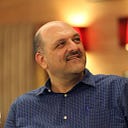Member-only story
Perpetual Turmoil: A man-made holy pandemic that never ends
Book Review of Lives in Common: Arabs and Jews in Jerusalem, Jaffa and Hebron by Menachem Klein
I have a Jewish Israeli friend who lives in Jerusalem. His name is Avner. He lives in and for Jerusalem, totally immersed in both sides of the city, trying his best to bridge the unbridgeable gap between Palestinians and Israelis without a peace deal. Avner and I have a lot in common, we both want the best for our people, and we both have long come to terms that the other side is not disappearing. Before Israel prohibited me from having free access to Jerusalem, Avner and I would meet up for lunch at the Ambassador Hotel in East Jerusalem, owned by our mutual friend. We would catch up on life, which usually took three minutes, then spend the next hour debating history, politics and the future. Our political arguments always ended on the same note. I would claim that Israel has, and always had, a master plan and acts with full intention. Avner would counter that claim saying I’m giving the Israeli side too much credit and that much of what we are facing are a hodgepodge of haphazard missteps that have created an unfortunate reality on the ground.
Enter Lives in Common: Arabs and Jews in Jerusalem, Jaffa and Hebron by Menachem Klein, another Jewish Israeli friend of mine. Lives in Common offers Avner and me, even if…
